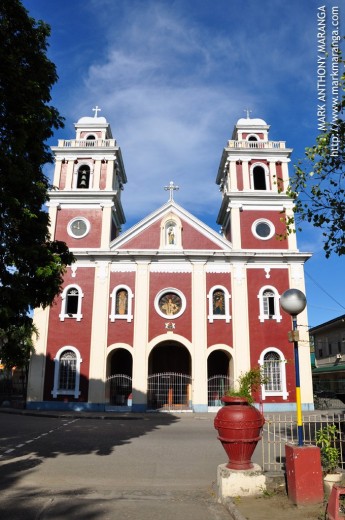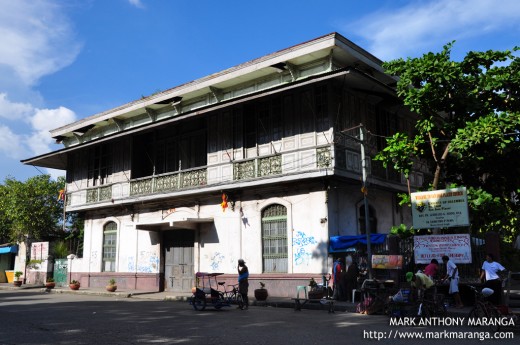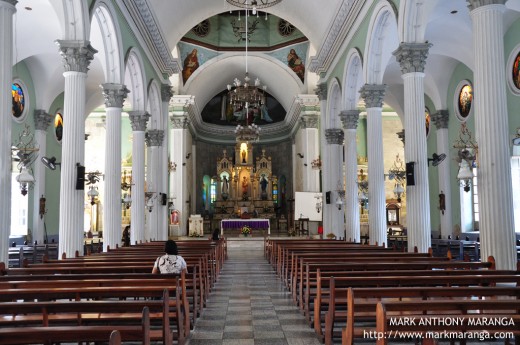The maiden church in Iloilo City in the Philippines was established by the Jesuits around 1607 to attend the necessities of the military stationed in Punta, the former name of Iloilo.
On April 29, 1617, the Augustinian priests built San Jose Church, a house of order. They held San Jose Church until 1775 when governance was handed over to the secular clergy.
In 1868, Iloilo together with La Paz (Loboc) was handed to the Augustinians in exchange for Jaro (where the Jaro Cathedral is located) which had become the centre of authority of the newly founded diocese. Fr. Mauricio Blanco was named prior in 1873 and he started enlarging and developing the older church built of light materials. Later he settled to construct a new church of stone and brick, after the Miguelete church of Valencia del Cid (Spain).Nevertheless, he was ineffective to accomplish his plans, and ceased when he had completed two stories. He finished the church, added two towers one with a clock and barometer and built a convent.
The development of the towers commenced on November 14, 1893. The church was renovated in 1902 under Fr. Manuel Diez, repaired in 1945 under architect and engineer Mariano Cacho following plans by Fr. David Caseres.
The altars were gilded by Fr. Jesus Fernandez. During World War II, the church was saved from being bombed by the Americans after they received information that Japanese were not held in the church as they were previously informed. Between 1980-82 the church was renovated, a new marble floor was laid, under the direction of poet-writer, Fr. Gilbert Centina. San Jose Church is one of the few parishes in the Philippines still under the Augustinians.
Features of the San Jose Parish Church
The church’s appeal lies less in ornamentation and more on the rational modulation of forms and spaces. Typically Renaissance in inspiration, the church façade is neatly divided into proportionate vertical modules, pierced by arch and round apertures. The twin bell towers flanking the façade uses composite capitals and has a balustrade running above the fourth floor. The church interior has an arcade of Corinthian columns supporting a faux barrel vault over the nave and groin vaults over the aisle. The main altar has some Gothic touches. A precious treasure of the church is an image of the Nuestra Señora del Rosario discovered by Diego Quiñones during the Dutch siege of Iloilo on 29 September 1614. The statue was brought by Frs. Jerónimo Alvarado and Juan de Morales to the fort, where a cofradía (confraternity) to the Virgin was established. Damaged by a fire which gutted the church ca. 1850, the image was restored in 1873 and 1907.
Foot reflexology is available everyday from 9:00 am to 9:00 pm. For those who want to join the Knights of Columbus, you may visit the church and look for Rev. Fr. Achilles G. Secio, OSA (Chaplain) or SK Edmundo P. Pama (Charter Grand Knight).
Mass Schedule
Sunday Masses
Ilonggo – 5:30am, 2:30pm, 7:00pm
English – 7:00am, 8:30am, 10:00am, 4:00pm, 5:30pm
Daily Masses
Ilonggo – 6:00am
English – 7:00am, 5:30pm
Confession
Daily – 5:00pm
Location
San Jose Church is bounded by Dela Rama St., Calasanz St., and Zamora St. It is directly fronting to Plaza Libertad (Liberty Plaza), 70 meters to the west is the Iloilo City Hall. On one side of the San Jose Church is the San Jose Catholic School while on the other side is the Church Convent.
This page is last updated on







 Mark Anthony Maranga is an Educator-Parent to his 3 Homeschooling Kids. He sells
Mark Anthony Maranga is an Educator-Parent to his 3 Homeschooling Kids. He sells 










Thank you for posting this. I hope that I may visit Iloilo again. Im fond of visiting churches.
Such a classy place to go to. I was just reading about iloilo in another blog and I guess this should really add them to their collection of infos. Being a fan of churches though mostly in Luzon areas that I visited, San Jose church really is inspiring to go to. I will sure have this in my to do list when I visit Iloilo next year.